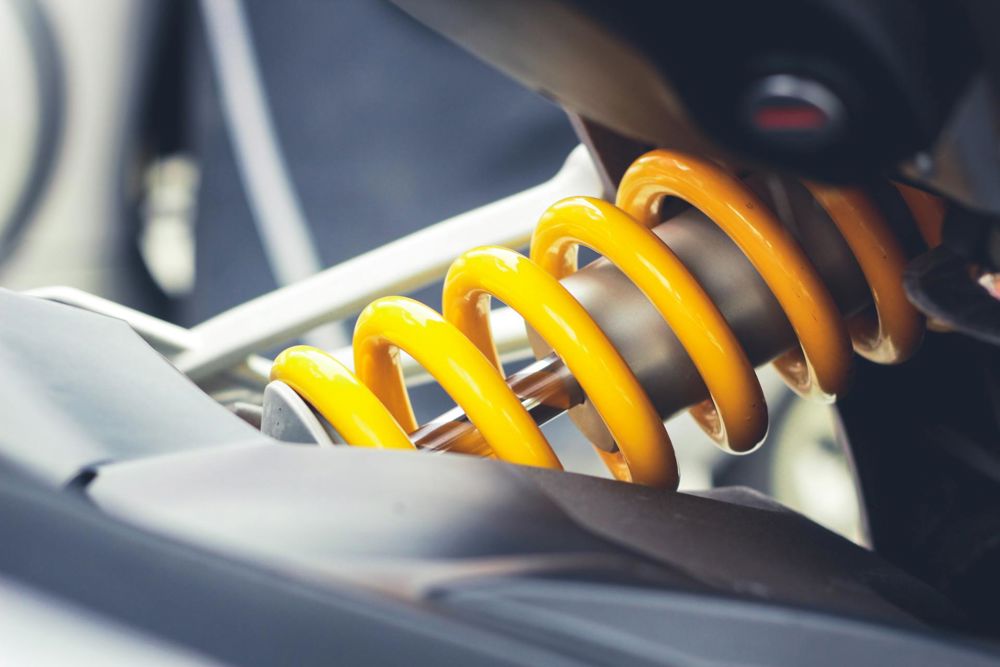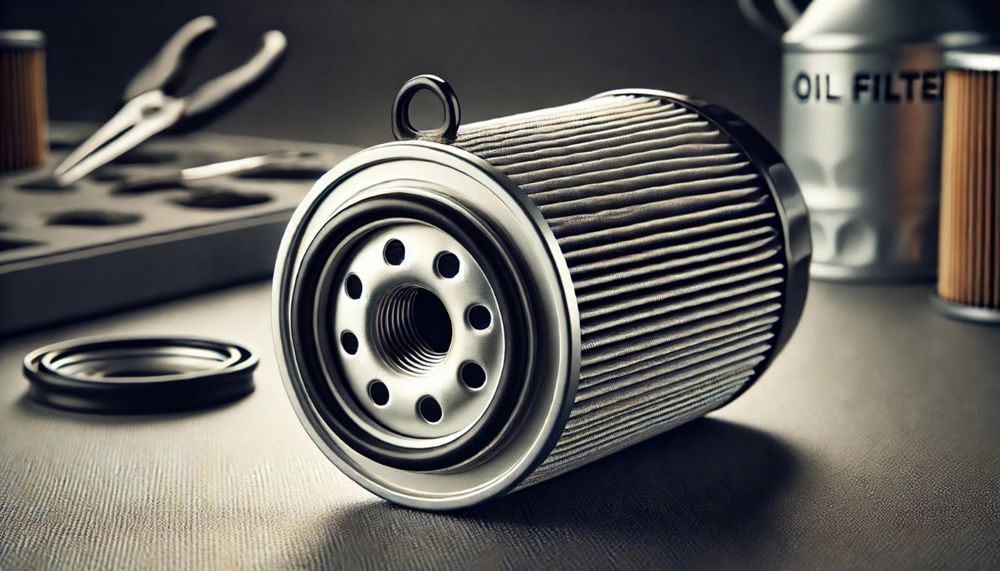Need help? Give us a call
23rd Dec 2024
Suspension Bushes FAQ
It's not surprising that many drivers are confused on the subject of suspension bushes. With so many types of bush on the market, and various reasons for choosing one over another, this guide will hopefully answer most of your questions.
What this guide covers:
- What are suspension bushes, and what do they do?
- How long do suspension bushes typically last?
- How do I know when my suspension bushes need replacing?
- Can worn suspension bushes damage other parts of my car?
- What types of suspension bushes are there?
- How do I choose the right suspension bush material for my vehicle?
- Can I replace suspension bushes myself?
- Should I go for OEM bushes or aftermarket options?
- Do I need an alignment after changing suspension bushes?
Let's dive in!
1. What are suspension bushes, and what do they do?
2. Suspension bushes, sometimes called silent block bushes or suspension mountings, connect a vehicle’s suspension to its frame, and play a vital role in vehicle comfort, stability, and handling. They are small components, usually made of rubber, often found on suspension control arms and other suspension components.
Suspension bushes have several purposes:
- Isolate vibrations – Suspension bushes absorb vibrations and noise from the suspension system, reducing the amount of vibration that’s transmitted to the vehicle and driver.
- Prevent metal-to-metal contact – They prevent metal-to-metal contact between suspension parts, which can cause erosion.
- Movement allowance – They control the amount of movement from the suspension system to the vehicle, while still allowing essential free movement of the suspension parts.
- Alignment – Suspension bushes help align the suspension and steering assembly components.
2. How long do suspension bushes typically last?
The lifespan of your suspension bushes very much depends on your driving style and the road conditions rather than mileage. Bumpy or rough roads can wear out the bushes faster, as can hard driving that puts more stress on them. Oil leaks from the engine can also affect the rubber, reducing their lifespan. Even in optimum driving and road conditions, your bushes will eventually wear out due to age, regardless of mileage.
3. How do I know when my suspension bushes need replacing?
Several warning signs could indicate that your suspension bushes need replacing.
Noises – Rattling, clunking or creaking noises when driving over rough terrain or taking sharp turns.
Steering – Loose or heavier steering or steering that feels off centre after turning.
Ride – A bumpy or uncomfortable ride, or a feeling of pulling or braking when accelerating.
Uneven tyre wear – or tyre wear patterns that show signs of camber wear.
Increased vibration
4. Can worn suspension bushes damage other parts of my car?
Yes, they can. Control arms, tyres and other suspension components can all be affected by worn suspension bushes. Left unchecked, worn suspension bushes can compromise safety, increase repair costs, and reduce the overall lifespan of your vehicle.
- Damage to control arms includes increased stress, cracking or warping or wear on mounting points.
- Damage to tyres can include uneven wear, reduced traction, and a shortened lifespan.
- Damage to other suspension parts include additional strain on ball joints and tie rod ends, extra stress on shock absorbers and springs, as well as stress on the sub-frame and chassis, potentially leading to cracks or misalignment.
5. What types of suspension bushes are there?
Rubber bushes
The most common type of suspension bushes, and those more traditionally found in many road vehicles are made from rubber. Rubber bushings are cost-effective, widely available, and highly effective at absorbing vibrations and noise, providing a smoother, quieter ride.
On the downside, rubber bushings can be prone to cracking and splitting, and they deteriorate faster over time, especially in extreme temperatures or when exposed to oils and road salt. Their softness can also lead to less precise handling and more body roll when driven aggressively. In addition, rubber compresses significantly under heavy loads, which can affect their performance.
Polyurethane bushes
Polyurethane bushings are a popular aftermarket upgrade, particularly for performance vehicles or off-road applications. The stiffness of polyurethane – which can be customised to your needs – enhances suspension performance, providing better handling and a sharper response.
Polyurethane is highly resistant to wear and tear, so it lasts much longer than rubber and maintains a consistent performance. Bushings made from this material have the advantage of being resistant to UV exposure, heat, oils, road salt, and dust, so they’re a good choice for harsh environments.
The downside is that the stiffness that improves handling can also transfer more noise and vibration into the cabin, reducing comfort. The stiffness of polyurethane can also increase stress on other suspension parts, which can cause faster wear or failure.
Cost is also a factor: polyurethane bushes are typically more expensive than rubber ones. Care needs to be taken with installation, too, as they can wear more quickly or fail if not fitted correctly.
Hydraulic bushes
These bushes contain a liquid-filled chamber, usually oil or another damping fluid, designed to absorb vibrations and improve ride comfort.
Hydraulic bushes are commonly used in luxury or high-end vehicles to enhance comfort and reduce road noise.
Pros:
- Superior vibration and noise damping.
- Smooth ride quality.
Cons:
- Expensive compared to standard rubber or polyurethane bushes.
- Limited durability in harsh driving conditions.
6. How do I choose the right suspension bush material for my vehicle?
Here’s a handy comparison chart for rubber and polyurethane bushes to help you decide which is best for you. The choice depends on your priorities: comfort and cost for rubber, or durability and performance for polyurethane.
| Feature | Rubber Bushes | Polyurethane Bushes |
|---|---|---|
| Comfort | High (smooth, less vibration) | Moderate to Low (increased NVH) |
| Durability | Moderate (degrades over time) | High (long-lasting, resistant) |
| Handling | Moderate (softer, less precise) | High (stiffer, more responsive) |
| Cost | Low (affordable, standard) | High (more expensive |
| Environmental Resistance | Low (susceptible to oil, salt, UV) | High (resistant to elements) |
| Siutability | Everyday driving, comfort-focused | Performance, off-road, longevity |
7. Can I replace suspension bushes myself?
You can, but it’s a moderate- to highly challenging DIY job that requires the right preparation, tools, and skills. Some control arm bushings can’t be replaced separately, so you’ll need to replace the entire control arm – worth bearing in mind as you weigh up your skillset! Some vehicles are easier to work on than others. Older vehicles can be more challenging, as seized bolts defy your efforts to remove them.
Replacing suspension bushes is beyond general car maintenance, so if you don’t have a good understanding of suspension systems, tools, and how bushings fit into the assembly, the best advice is to consult an experienced mechanic.
Finally, the DIY route might save you labour costs, but the money you spend on specialised tools – if you don’t already own them – could tip the economic balance in favour of taking your car to a professional.
8. Should I go for OEM bushes or aftermarket options?
The choice between OEM (Original Equipment Manufacturer) bushes and aftermarket options depends on your priorities. Your choice may depend on quality, cost, performance, and the intended use of your vehicle.
Pros and cons of OEM bushes
OEM bushes are designed and manufactured specifically for your vehicle by its maker or an approved supplier.
Pros
- Guaranteed fit – As the part is designed specifically for your vehicle, you’re guaranteed a good fit without any modification.
- Consistent quality – OEM parts will always meet the manufacturer’s standards for durability and performance.
- Warranty – OEM parts usually have a better warranty.
- Designed for comfort – As OEM parts are generally intended for everyday driving, they typically prioritise vibration absorption and ride comfort.
Cons
- Higher cost – Owing to the advantages outlined above, OEM bushes are usually more expensive than aftermarket options.
- Fewer options for non-standard performance needs – OEM bushes have limited options for enhanced handling that some drivers seek because they are usually designed for standard driving needs.
Pros and cons of aftermarket bushes
Aftermarket bushes are made by third-party manufacturers. Options can range from direct replacements and high-performance upgrades.
Pros
- Range of performance options – Aftermarket bushes can be made from varied materials – such as polyurethane or hybrid composite that improve handling – and designs to meet diverse needs, i.e. off-road, performance or comfort.
- Lower cost – Aftermarket bushes are usually cheaper than OEM options.
- Customisation options – Some aftermarket manufacturers sell bushings in varying stiffness levels so you can tailor them to your own driving style.
Cons
- Fitting – Some after market bushes may need modification to ensure a better fit.
- Variable quality – Durability and quality can vary widely between aftermarket brands.
- Increased noise and vibration – Some performance-oriented bushes can transfer excessive vibration and noise into the vehicle’s cabin.
- Poorer warranty – The warranty terms of some aftermarket manufacturers won’t match OEM warranties, however most Polyurethane bush manufacturers offer a lifetime warranty.
Choose OEM bushes if you want to ensure the same ride quality and comfort as the original manufacturer’s part, and your priority is trouble-free installation and decent warranty, even at a higher price.
Choose aftermarket bushes if cost-saving is a priority on standard replacements, or if you want to improvement performance for a specific need, such as off-road driving, heavy-duty use, or track performance, and you’re open to customising the bush stiffness to meet your requirements.
9. Do I need an alignment after changing suspension bushes?
As suspension bushes play a key role in maintaining the correct geometry of the suspension system, when they are replaced even minor shifts in component positions can affect the alignment settings.
Having your vehicle’s alignment checked and adjusted afterwards is not just a precaution, it’s an essential step to ensure your vehicle doesn’t experience uneven tyre wear, reduced handling performance and increased stress on other suspension components.
Alignment is especially important if the replacement involves control arms, trailing arms, or performance upgrades like stiffer polyurethane bushes, as these directly affect how the suspension behaves under load. While some small repairs may not require alignment, skipping this step after major bush replacements can lead to long-term issues like poor steering responsiveness or faster tyre wear.
Next steps
It's a big topic, so if you still need help choosing the right bushes for your vehicle, please get in touch for free expert advice.
TDC Automotive has a wide selection of high-quality suspension bushes from leading brands Lemforder, SuperPro and Powerflex.
Search our Shop for suspension bushes and performance bushes.




